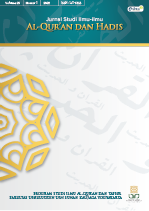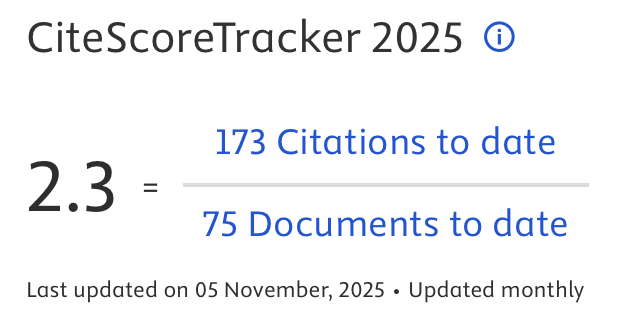Reciting QS. Al-Ra`d and QS. Yāsīn in Phenomena of Sakarāt al-Maut in Sumenep, Madura
DOI:
https://doi.org/10.14421/qh.2022.2301-09Keywords:
QS. Yasin, QS. Al-Ra’d, Sakarat al-Maut, Sumenep, Living Qur’an, PhenomenologyAbstract
This article discusses the phenomenon of the reciting QS. Yāsīn and QS. al-Ra'd to people who experience critical conditions such as for someone who becomes the door of death (Sakarat al-Maut) which is widely done in Sumenep Madura Regency. Sumenep people assume that reciting surah al-Ra'd and Surah Yasin to people who experience door of death (Sakarat al-Maut) can speed up the process or provide healing, however, in that aspect of the meaning of the two Surah is not related to the phenomenon of door of death (Sakarat al-Maut). This shows that the Sumenep people in this tradition have a different reception from the literal meaning of these two surahs. Therefore, this study aims to see how the Sumenep people's understanding of surah Yāsīn and surah al-Ra'd and how the structure forming the phenomenon of the use of the two Surahs in the phenomenon door of death (Sakarat al-Maut). This article is qualitative type research with the use of field research (field research) or field studies as a research method. The approach used as an analytical method is Edmund Husserl's phenomenological approach. This approach looks at a phenomenon in the absence of the assumptions that accompany it during the process of observation and collection of field data. The results of this study show that in some areas in Sumenep Regency are commonly recited surah Yāsīn or surah al-Ra'd or surah Muhammad or surah Yāsīn with surah al-Ra'd, or surah Yāsīn with al-Qiyamah, or surah Yāsīn and al-Taubah or surah Yāsīn and al-Kahfi to people who experience door of death (Sakarat al-Maut). The basis of the reading is the Hadith of the Prophet (peace be upon him) and the explanation of the salaf books.
 Abstract viewed: 609 times
|
Abstract viewed: 609 times
|
 PDF downloaded = 486 times
PDF downloaded = 486 times
References
Abu Bakar Utsman bin Muhammad Syatha al-Dimyathi al-Syafi’i. I’anah al-Thalibin ‘ala Halli Alfadz Fath al-Mu’in. Dar al-Fikr li al-Thaba’ah wa al-Nasyr wa al-Tauzi’: t.tp, 1997.
Al-Nasa’i, Abu Abdurrahman Ahmad Al-Khurasani. Al-Sunan Al-Kubra. Beirut: Mu’assasah al-Risalah, 2001.
Bakker, Anton, Metode-metode Filsafat. Jakarta: Graha Indonesia, 1984.
Beerling, R.F., Filsafat Dewasa Ini. Jakarta: Balai Pustaka, 1958.
Bertens, K., Filasafat Barat Abad XX. Jakarta: PT Gramedia, 1987.
Crott, M., Phenomenology and Nursing Research. Melbourne: Churchill Livingston, 1996.
Delfgaauw, B., Filsafat Abad 20, Penerjemah: Sugono Soemartono. Jogjakarta, Tiara Wacana, 1988.
Edgar, Andrew dan Peter Sedgwick, Key Concept in Cultural Theory. London and New York: Routledge, 1999.
Effendi, Satria and M Zein, Ushul Fiqh. Jakarta: Kencana, 2005.
Gusmian, Islah, dkk. Living Qur’an: Teks, Praktik, dan Idealitas dalam Performasi Al-Qur’an. Bantul: Lembaga Ladang Kata, 2020.
Hasbiansyah, O., “Pendekatan Fenomenologi: Pengantar Praktik Penelitian dalam Ilmu Sosial dan Komunikasi”, Mediator, Vol. 9, No. 1 (Juni, 2008).
Hibban, Muhammad bin, Shahih Ibnu Hibban. Beirut: Mu’assasah al-Risalah, 1988.
Hudson, Michael C., “The Study of the Middle East: Research and Scholarship in the Humanities and Social Sciences. Edited by Leonard Binder.,” American Political Science Review 72, no. 4 (December 1978): 1449–50, https://doi.org/10.2307/1954615.
Junaedi, Didi, “Living Qur’ān: Sebuah Pendekatan Baru Dalam Kajian Al-Qur’ān (Studi Kasus Di Pondok Pesantren As-Siroj Al-Hasan Desa Kalimukti Kec. Pabedilan Kab. Cirebon),” Journal of Qur’ān and Hadith Studies 4, no. 2 (2015).
Kriyantono, Rachmat, Teknik Praktis Riset Komunikasi: Disertai Contoh Praktis Riset Media, Public Relations, Advertising, Komunikasi Organisasi, Komunikasi Pemasaran. Jakarta: Kencana Prenada Media Group, 2008.
Lorens, Bagus, Kamus Filsafat. Jakarta: Gramedia Pustaka Utama, 2002.
Mansur, Muhammad, “Living Qur’ān Dalam Lintasan Sejarah Studi Qur’ān,” Metodologi Penelitian Living Qur’ān Dan Hadits, Edited by Sahiron Syamsuddin. Yogyakarta: Teras, 2007.
Moustakas, Clark, Phenomenological Research Methods. New Delhi: Sage Publications, 1994.
Muhadjir, Noeng, Metodologi Penelitian. Yogyakarta: Rake Sarasin, 2011.
Muhammad bin Ali bin Muhammad. Dalil al-Falihih li Thuruq Riyadh al-Shalihin. Dar Ma’rifah li al-Thaba’ah wa al-Nasyr wa al-Tauzi’: Libanon, 2004.
Muhammad bin Ismail bin Shalah bin Muhammad al-Hasani. Subul al-Salam. Dar al-Hadits: t.tp, t.t.
Muhammad, Ali bin. Mirqatul Mafatih. Dar al-Fikr: Libanon, 2002.
Mustaqim, Abdul, Metode Penelitian Al-Qur’ān Dan Tafsīr. Yogyakarta: Pondok Pesantren LSQ al-Rahmah Bekerja Sama dengan Idea Press Yogyakarta, 2014.
Phillipson, M., “Phenomenological Philosophy and Sociology” in New Directions in Sociological Theory, P. Filmer, et.al. London: Collier MacMillan, 1972.
Purwanto, Tinggal, “Fenomena Living AL-Qur’an dalam Perspektif Neal Robinson, Farid Esack dan Abdullah Saeed,” Mawa’izh, Vol. 1, No. 7 (Juni 2016).
Putra, Heddy Shri Ahimsa, “Fenomenologi Agama: Pendekatan Fenomenologi untuk Memahami Agama”, Walisongo, Vol. 20, No. 2 (November, 2012).
Putra, Heddy Shri Ahimsa, “The Living Al-Qur’ān: Beberapa Perspektif Antropologi,” Walisongo: Jurnal Penelitian Sosial Keagamaan, Vol 20, No. 1. (Mei 2012).
Rafiq, Ahmad, “Living Qur’an: Its Texts and Practices in the Functions of the Scripture,” Jurnal Studi Ilmu-Ilmu al-Qur’an dan Hadits, Vol 22, No. 2 (Juli 2021).
Saeed, Abdullah. The Qur’an: An Introduction. London and New York: Routledge, 2008.
Smith. Jonathan A., Paul Flowers and Michael Larkin, Interpretative Phenomenological Analysis: Theory, Method, and Research. England: Bristol Uwe, 2009.
Spiegelberg. H., Phenomenological Movement, A Historical Introduction. Martinus Nijhoff, The Hugue, 1978.
Sutopo, HB., Metodologi Penelitian Kualitatif. Surakarta: UNS Press, 2002.
Thahir, Lukman S., Studi Islam Interdisipliner. Yogyakarta: Qirtas, 2004.
Warnock, Mary, Existensialism. New York & Oxford: Oxford University Press, 1989.
Aisyah, Siti, S.H, Warga, Wawancara Langsung (17 Juni 2021).
Badri, A., Santri, Wawancara Langsung (3 Juni 2021).
Baidawi, Moh., Tokoh Agama, Wawancara Langsung (12 Juni 2021).
Hamsum, Tokoh Masyarakat, Wawancara Langsung (5 Juni 2021).
Hari, Tokoh Agama, Wawancara Langsung (15 Juni 2021).
Jufriyadi, Guru, Wawancara Langsung (4 Juni 2021).
Khori, Ahmad, Guru, Wawancara Langsung (23 Juni 2021).
Mannan, Maimon, Pengasuh PP. Hidayatut Thalibin, Wawancara Langsung (3 Juni 2021).
Fazlinawati, Nur dan Pialqura Dan “Resepsi Ayat Al-Qur’ān dalam Terapi Al-Qur’ān,” n.d. Skripsi, UIN Sunan Kalijaga Yogyakarta, 2017.
Hadi, Abdul, “Bacaan Ayat Al-Qur’ān Sebagai Pengobatan (Studi Living Qur’ān Pada Praktik Pengobatan Di Ds. Kehen Kec. Turi Kab. Lamongan Jawa Timur),” Skripsi, Fakultas Ushuluddin Dan Pemikiran Islam Uin Sunan Kalijaga Yogyakarta, 2015.
Qosi’in, Imam Fitri, “Pembacaan Al-Qur’ān Surat-Surat Pilihan Di Pondok Pesantren Futuhiyyah Mranggen: Studi Living Qur’ān” (PhD Thesis, UIN Walisongo Semarang, 2018).
Yakin, Nurul, “Pembacaan Al-Qur’ān Surat-Surat Tertentu Bagi Santri Daarul Qur’ān Gayam Sukoharjo (Kajian Living Qur’ān)”. PhD Thesis, IAIN Surakarta, 2018.
Muhammad, Petani, Interview (3 Juni 2021).
Muhni, Tokoh Masyarakat, Interview (2 Agustus 2021).
Muhsinah, Warga, Wawancara Langsung (2 Juni 2021).
Ra’is, Fathor, Guru/Ustads dan Ketua Falakiyah PCNU Sumenep, Wawancara Langsung (2 Juni 2021).
Rahmatilla, Siti, Mahasiswi, Wawancara Langsung (21 Juni 2021).
Sahawar, Warga, Wawancara Langsung (1 Agustus 2021).
Suhartatik, Ibu Rumah Tangga, Wawancara Langsung (8 Juni 2021).
Thohir, Hafid, Guru, Wawancara Langsung (23 Juni 2021).
Umam, Syaikul, Warga, Wawancara Langsung (6 Juni 2021).
Wahab, Abdul, Tokoh Masyarakat, Wawancara Langsung (3 Juni 2021).
Wahab, Abdul, Tokoh Masyarakat, Wawancara Langsung (3 Juni 2021).
Downloads
Published
How to Cite
Issue
Section
License
Publishing your paper with Jurnal Studi Ilmu-ilmu al-Qur'an dan Hadis means that the author or authors retain the copyright in the paper. Jurnal Studi Ilmu-ilmu al-Qur'an dan Hadis uses license CC-BY-NC-ND or an equivalent license as the optimal license for the publication, distribution, use, and reuse of scholarly works. This license permits anyone to copy and redistribute the material in any medium or format and must give appropriate credit, provide a link to the license, and indicate if changes were made. If you remix, translate, transform or build upon the material you may use it for private use only and not for distribution. Jurnal Studi Ilmu-ilmu al-Qur'an dan Hadis granted an exclusive non-commercial reuse license by the author(s), but the author(s) are able to put the paper onto a website, distribute it to colleagues, give it to students, use it in your thesis, etc, so long as the use is not directed at a commercial advantage or toward private monetary gain. The author(s) can reuse the figures and tables and other information contained in their paper published by Jurnal Studi Ilmu-ilmu al-Qur'an dan Hadis in future papers or work without having to ask anyone for permission, provided that the figures, tables, or other information that is included in the new paper or work properly references the published paper as the source of the figures, tables or other information, and the new paper or work is not direct at a private monetary gain or commercial advantage.
Jurnal Studi Ilmu-ilmu al-Qur'an dan Hadis journal Open Acces articles are distrubuted under the Creative Commons Attribution-NonCommercial-NoDerivatives 4.0 International (CC BY-NC-ND 4.0). Article can be read, copy and redistribute the material ini any medium or format under the following conditions:
Attribution — You must give appropriate credit, provide a link to the license, and indicate if changes were made. You may do so in any reasonable manner, but not in any way that suggests the licensor endorses you or your use.
NonCommercial — You may not use the material for commercial purposes.
NoDerivatives — If you remix, transform, or build upon the material, you may not distribute the modified material.










